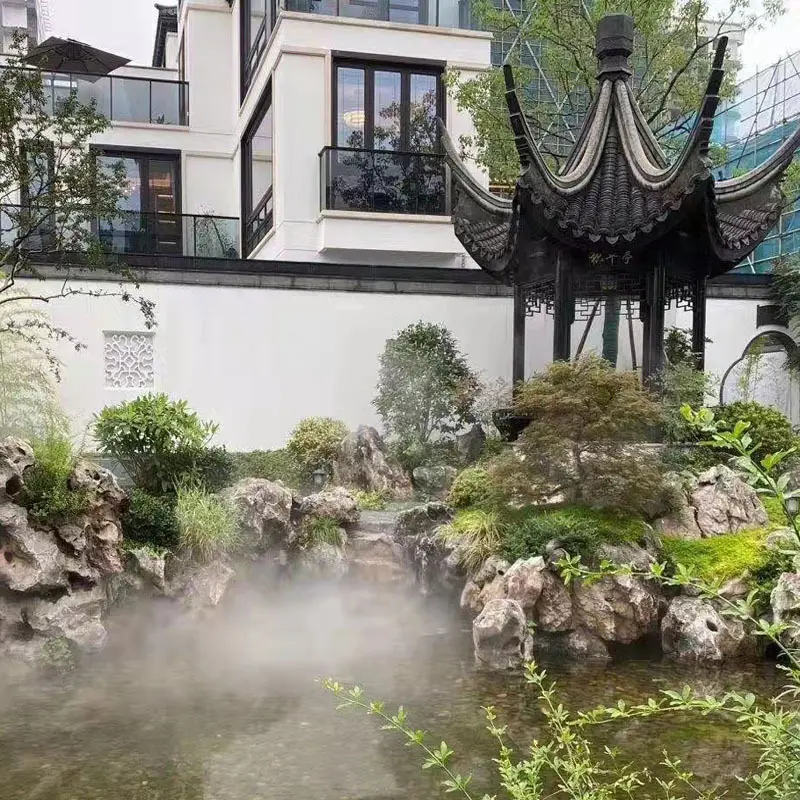Environmental science
Environmental science, also known as feng shui. Feng shui, which originated in China, is a combination of natural philosophy, environmental science and traditional culture, focusing on how to promote harmony between man and nature through environmental layout. It covers the siting and layout of homes, offices, cemeteries and other places in order to achieve harmony and balance, affecting the fortunes and well-being of the occupants. Feng shui school is divided into situation school and Li style, the former focuses on geographical situation, the latter focuses on Yin and Yang five elements and other theories. The five elements are dragons (mountains), holes (places), sand (terrain), water (water flow), and direction (direction), which together affect the aura and energy flow. Modern Feng shui is considered as a landscape evaluation system, involving multiple scientific fields such as geophysics and ecology. In practice, feng shui masters use tools such as compasses to make precise measurements to optimize the layout of the environment. Feng shui is not only regarded as an art, but also a unique theoretical system combining modern and traditional, and its theory and practice are valued globally.
Feng Shui Layout Guide
Home Feng Shui Layout Guide
1. Door layout
Avoid facing a lift or staircase, which in Feng Shui is known as a "brake".
Doors should avoid direct opposition to other doors to minimise direct conflict of energy.
2. Living room layout
The living room should be located in the front half of the house, near the front door to allow for the flow of positive energy.
It's best to lean against a wall behind the sofa to symbolise having a backbone that provides support and security.
3. Bedroom layout
The bed should not face the door to protect privacy and avoid direct airflow.
Bedrooms should be located away from noisy areas, such as lift shafts or streets, to ensure a quiet resting environment.
4. Kitchen and dining room
The kitchen should not be opposite the bathroom to avoid fire and water clashing.
The dining room should have sufficient natural light to promote harmonious communication among family members.
5. Choice of colours
Use mild colours and avoid overly bright or cold hard tones.
Choose colours that help to balance the five elements according to the occupant's birthdate.

Office Feng Shui Layout Guide

1. Desk location
There should be a solid wall behind the desk to symbolise support and stability.
Avoid having your back to a door or window to avoid disturbance and having no support behind you.
2. Leadership Office
The leader's office should be located in a quiet and authoritative part of the company.
The desk should ideally face the door, but not directly in front of it, so that it can be observed without being directly impacted.
3. Conference room layout
Meeting rooms should be located in an easily accessible location where team members can easily gather.
Conference tables should avoid sharp angles to promote harmony among team members.
4. Light and ventilation
Ensure your office has plenty of natural light to boost productivity and motivation.
Good ventilation helps keep the air fresh and reduces the incidence of disease.
5. Plant placement
Place some houseplants, such as a fortune tree or bamboo, to increase positive energy and vitality.
Avoid placing thorny or poisonous plants.
Feng Shui Layout Guide for Courtyard
1. Forecourt layout
The front yard should be kept tidy and avoid piles of clutter that could impede the flow of positive energy.
Low shrubs or flowers can be planted to add beauty without obstructing the view.
2. Backyard layout
The backyard can be used as a space for relaxation and meditation with seating and water features.
Avoid placing large structures in the centre of the courtyard as this may affect the flow of energy.
3. Water features
Water represents wealth, and a small fountain or pond in the courtyard can attract wealth.
Water features should be kept clean to avoid becoming breeding grounds for mosquitoes.
4. Walls and fences
Fences should not be so high as to block the entry of sunlight and positive energy.
The use of natural materials such as wood or stone blends harmoniously with the natural environment.
5. Plant selection
Choose locally appropriate plants that are easy to care for and will thrive.
Avoid planting large trees whose roots may damage the foundation or block sunlight.




